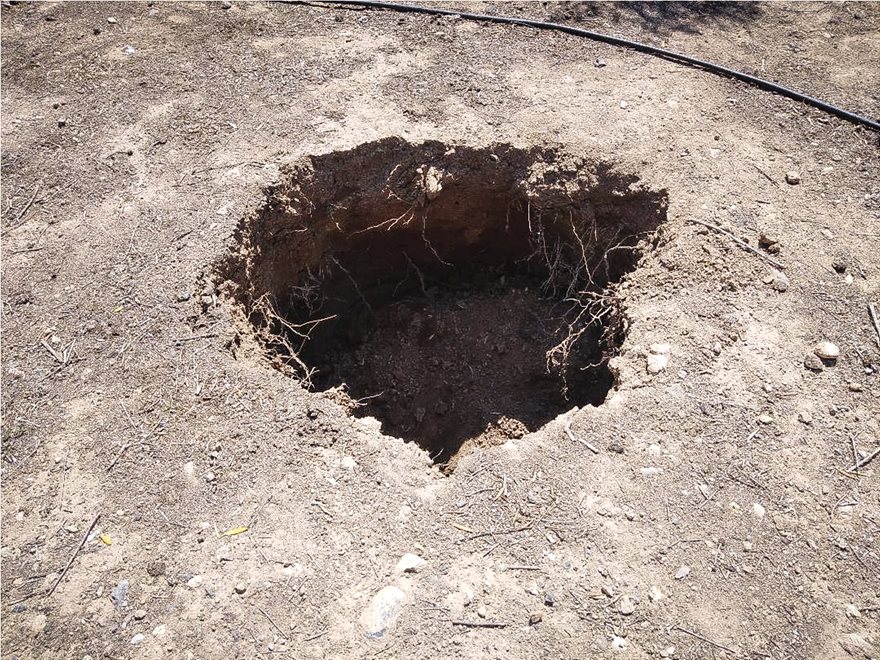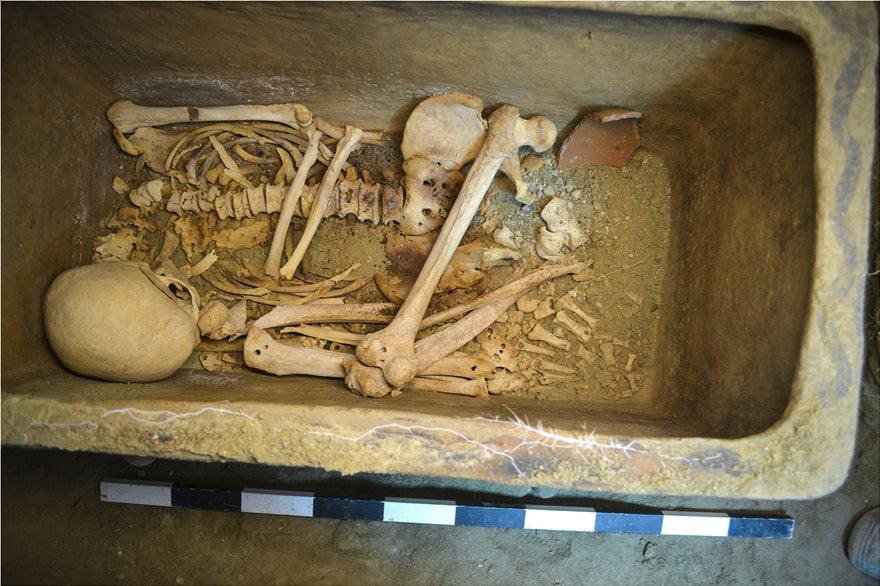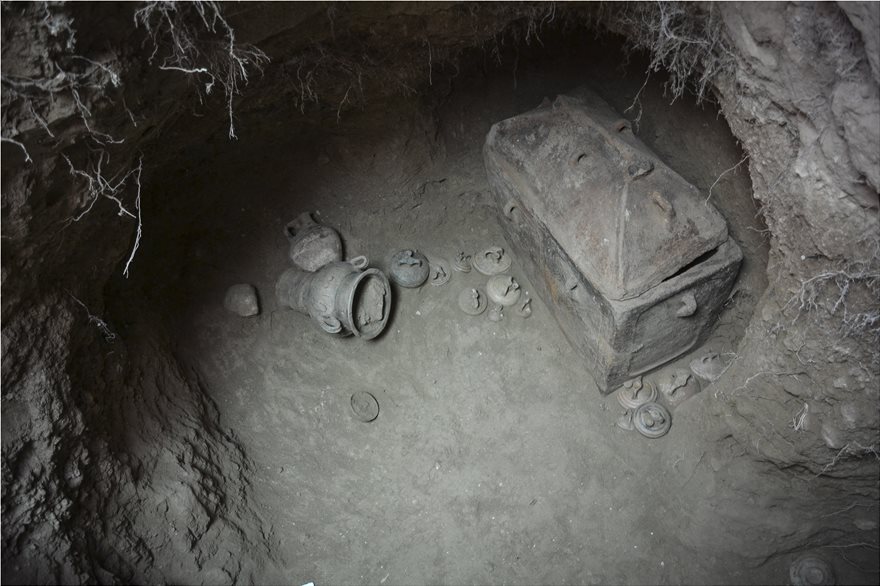
An intact chamber tomb dating from the late Minoan period discovered in Crete in 2018, provides valuable insights into Minoan culture and society.
It is a reminder of the rich and complex history of Crete, and it will continue to be studied and analyzed by archaeologists for many years to come.
The tomb was discovered near the town of Ierapetra, eastern Crete, at a depth of more than 2.5 meters when a farmer was parking a car in his olive grove.
When the ground below his wheels gave way, the farmer found a gaping void that held an ancient burial site. Within were the bodies of two unknown Minoan Bronze Age men and several intricately painted ceramics, suggesting that the ancient family that lived there before was relatively wealthy.

Minoan Tomb in Crete is 3,400 years old
The tomb, which was sealed behind a stone wall, is thought to date from 1400 to 1200 BC—about 3,400 years old—and appears to have been uncovered courtesy of a broken irrigation tube that softened the soil. The almost perfectly preserved burial site was undisturbed by looting over millennia.
The chamber was divided into three niches and contained two larnakes. These embossed clay coffins, often decorated with abstract designs or religious or hunting scenes, were commonly used by Bronze Age Minoans, and each held a single skeleton arranged in a crouching position.
The men were buried with a bowl and 14 high-quality, ornamented Greek ritual jars, or amphorae, but Forbes notes that the tomb is not of the domed tholos variety that would have been used by the wealthiest Minoans.

The tomb is particularly notable in that Minoan settlements are more common in the country’s lowlands and plains than in the mountainous region of Ierapetra.
“We are particularly pleased with this great archaeological discovery as it is expected to further enhance our culture and history,” said Argyris Pantazis, deputy mayor of Local Communities, Agrarian, and Tourism of Ierapetra, speaking to local news outlet Cretapost. “Indeed, this is also a response to all those who doubt that there were Minoans in Ierapetra.”

The Minoan civilization
The Minoan civilization was a Bronze Age culture that was centered on the island of Crete. Known for its monumental architecture and its energetic art, it is often regarded as the first civilization in Europe.
The Minoan civilization developed from the local Neolithic culture around c. 3100 BC, with complex urban settlements beginning around 2000 BC. After c. 1450 BC, they came under the cultural and perhaps political domination of the mainland Mycenaean Greeks, forming a hybrid culture which lasted until around 1100 BC.
The Minoans constructed enormous buildings which their initial excavators labeled Minoan palaces. Subsequent research has shown that they served a variety of religious and economic purposes rather than being royal residences, though their exact role in Minoan society is a matter of continuing debate.
The palaces consisted of a large rectangular court surrounded by multistory wings with labyrinthine floorplans. The ruins of the palaces at Knossos and Phaistos are popular tourist attractions.
Related: A Walk Through Crete, Birthplace of the Minoans
See all the latest news from Greece and the world at Greekreporter.com. Contact our newsroom to report an update or send your story, photos and videos. Follow GR on Google News and subscribe here to our daily email!



